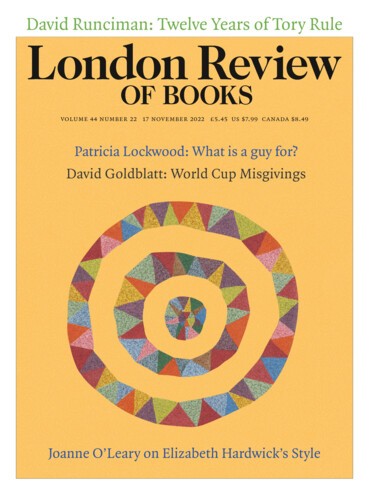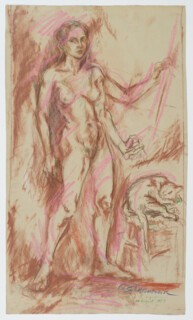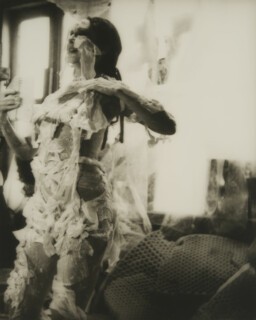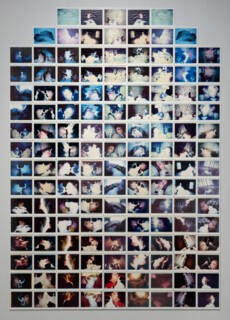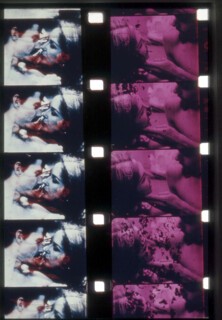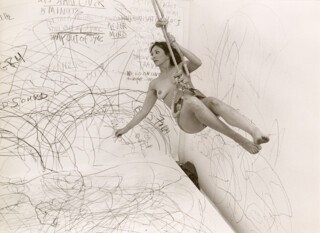In 1986, the art historian Lawrence Gowing wrote to Carolee Schneemann with a proposal. He would write a ‘substantial’ book on her work, but warned her that ‘I shall break your back with the weight of the devotion and the determination that I am unloading on you … You will have to hold my fanaticism down and teach it obedience.’ This would be the first monograph on Schneemann, and had the potential to bring much needed critical attention as well as institutional support. Gowing was the Kress Professor at the National Gallery in Washington; Schneemann, then aged 47, was struggling to make a living, had sold no work to museum collections and had never had a large solo exhibition. Gowing ends his letter with a plea, paraphrasing Delacroix: ‘If I am not writhing like a snake in the hands of a sorceress I feel cold.’
The first major exhibition after an artist’s death can be decisive in fixing ideas about their work. For Schneemann, who died in 2019, this ‘freezing’ was an ambivalent prospect. She would have liked the kind of institutional and financial support that might come from Gowing’s book, but it also posed a threat. She had learned, she told him, that ‘to become the fantasy image of male imagination is to lose authority over the means of creating that image.’ She wouldn’t play the snake goddess and Gowing never wrote the book. But his letters are an example of the sort of reaction Schneemann’s work tends to elicit, an intense identification that ranges from passionate devotion and sexual fantasy to fury.
This must have something to do with how much of herself Schneemann seems to put into her work. Across film, performance, painting and installation, she promises access to her domestic life, her relationships, her body. She filmed herself having sex, making art, feeding the cat; wrote performance scripts about her lovers and money struggles; choreographed movement with an ecstatic gestural vocabulary (‘woman hacking throwing plucking the bird’). Her life was open to anyone who cared to inhabit it, or so the work seemed to say, with all the presumed intimacy of autobiography. And yet she didn’t like to cede control of the process. The current retrospective at the Barbican (until 8 January), the first since her death, is the first time her authority has slipped.
The exhibition opens with paintings, hung in more or less chronological order across the smaller rooms of the upper floor. In the first gallery, a self-portrait from 1957 shows an 18-year-old Schneemann beginning to reckon with herself. She stands naked, her poised body, recognisable from the hundreds of later performance photographs, bristling with energy. Tense fingers morph into claws, arms multiply. She seems to be trying to wrest her body from the paper. The use of sanguine pencil to capture her musculature is a deliberate nod to 16th-century Italian drawings, particularly those by Pontormo, whose ability to convey pulsing energy was an enduring influence. Meanwhile, ‘Céz-Anne’ (as she initially misheard the name) provided an important example of feminine creativity. Seeing the painter’s work, she thought that ‘these odd configurations could be by a woman’; she would return to the subject in her book Cézanne: She Was a Great Painter (1974). It was around the time of that early self-portrait that she started calling herself Schneemann, ‘a big, painterly, heavy name’, preferable to the ‘Scheinman’ of her youth and putting her, she said, on a more equal footing with the presiding Abstract Expressionists of the day: Rauschenberg, Pollock, de Kooning.
As the exhibition progresses, the paintings get thicker and look less and less like paintings. They gradually accumulate objects, escape their frames and transform into deconstructed boxes and installations (though there’s often an easel among the detritus). Schneemann’s move to New York in 1961 marked the beginning of a productive period working in group performance, fostered by the social and artistic environment of Fluxus and Happenings, the choreography of Merce Cunningham and the compositions of Charles Ives. In her work with Judson Dance Theatre, Schneemann translated the syncretic energy of her paintings into performance: dancers leaped into mounds of crumpled papers in Newspaper Event (1963), or ran full pelt into one another to stage spectacular crashes, as in Lateral Splay (1963). It is difficult to recapture the excess and humour of these works in a gallery. They’re represented by scores and photographs, muted by their presentation in neatly ordered vitrines.
There is greater freedom in the Barbican’s large downstairs galleries. Works are pulled out of chronological order and given more space to talk to one another. We see the way Schneemann transformed performances into installations, the way she sought to escape the ‘deadness of documentation’. In an interview from 2016, she recalled her mixed feelings following the first performance of Meat Joy (1964), a piece of chicken-slinging group choreography. ‘It was a whole other world,’ she said, ‘but what does it look like? … I was very, very disturbed because I couldn’t see the physicality of what I had created with the group interactions. It was torment.’
On display in one of the larger rooms are three installations that reject the idea of a performance as a single transcribable event. The black and white film Body Collage (1967) combines video and still images from three photographers: Schneemann invited them to record her leaping into mounds of paper, wrapping herself in crinkled sheets and posing, naked, her body glistening with wallpaper paste. She then edited the material, speeding up the film and cutting to stills for a stop-motion, almost slapstick effect. In the process she appears to transform from nude archetype to clown to bandaged horror figure and back again. Shown opposite is Up to and Including Her Limits (1973-76), a performance in which Schneemann swings naked from a harness, marking the walls and floor with coloured pencils. Presented here as an installation of the deserted scene, the faint arcs and out-of-reach lines provide a sort of time-stamped proof of her presence. It’s accompanied by a film, made up of footage from different performances and edited together more than ten years later. As in many of her works, meaning isn’t fixed in celluloid.
Infinity Kisses (1981-87), a grid of Polaroids, documents Schneemann’s morning ritual of kissing her cat on the mouth. These sleepy snogs are captured in out-of-focus images, as though she can’t interrupt the ritual (or wake up enough) to set up the shot. In some you can see tongues touching, paws groping at a chest or face; in others, the cat, Cluny, appears to pout. Cats and sex – ‘the mysteries of the pussies’ – were central to Schneemann’s feminism. The exhibition materials explain that the photographs question taboos and ‘challenge hierarchies which privilege human life’, sidestepping some of the trickier issues of symbiogenesis and consent as well as Schneemann’s own anthropocentric comparisons between clever, sensual cats with claws (real women) and happy, obedient dogs (male fantasy).
Another cat, Kitch, appears in the film Fuses (1964-67), edited from months of footage of Schneemann and her partner, James Tenney, having sex at home. In some sections, she employed the shot-reverse-shot sequencing of Hollywood cinema: we see the couple on the bed, then the cat staring towards the camera, then the couple again. We begin to wonder if we are the cat. Could incorporating a cat’s perspective offer an escape from the male gaze, from what Schneemann described as the ‘heterosexual clamp’?
Watching Fuses is a pleasure. Schneemann painted and burned the celluloid film to create a hybrid form – it’s both movie and collage, flesh and paint. The splattered film strip marks out the rhythm of the frame rate, as it flits between slow scans of the pair’s bodies, sex, Schneemann emerging from the sea laughing, the view from a bedroom window, Kitch. There are passages of the kind of lingering close-ups on genitals that Barbara Hammer used in her lesbian classic, Multiple Orgasm (1976), as well as the handheld camerawork of contemporary films by Stan Brakhage (who was a close friend). Images are ordered for pattern and rhythm, which rather than building towards orgasm suggest the everydayness of sex in the couple’s domestic life. When we aren’t looking through the cat’s eyes, we are Schneemann looking at Tenney, or vice versa, as they pass the camera between them, or else an audience as they hang it from the ceiling – ‘like women are treated in pornography’, Schneemann joked. What seems remarkable about Fuses, even sixty years on, is its representation of messy, lustful, apparently equal partners at home and in bed.
Schneemann’s popularity has risen in recent years, in part because her work presents self-knowledge as a political force. She remained alert to the ways in which women’s experiences were dismissed or overlooked, including by feminisms and postmodernisms, brightly reclaiming them in her writing and performance. In the text for the installation Vulva’s Morphia (1995), Schneemann narrates the protagonist’s dizzying education in her own sexuality, from Freud’s relegation of the clitoral orgasm to its recovery in 1966 by Masters and Johnson. ‘Vulva decodes feminist constructivist semiotics,’ Schneemann announces, ‘and realises she has no authentic feelings at all; even her erotic sensations are constructed by patriarchal projections.’ Liberation, for Schneemann, was always personal, an ‘aggregate of sensations’, even in her more outward-looking work on war and atrocity. She worked at a remove from the central debates of 20th-century feminism – making sex films twenty years before the sex wars, kissing cats before the turn to the non-human – but as she wrote in her book on Céz-Anne, ‘I have given myself authority to support and pursue these insights.’
Send Letters To:
The Editor
London Review of Books,
28 Little Russell Street
London, WC1A 2HN
letters@lrb.co.uk
Please include name, address, and a telephone number.
